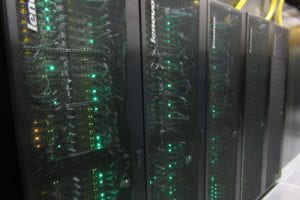
In our research unit we are looking at ways to reduce the environmental impact of our research. Chin Yang Shapland and Hayley Wragg share some of what they learned in a recent workshop and how IEU is beginning to apply this learning in making our computing processes more sustainable.
Over the past year there have been many conversations and speculations within our research unit about the sustainability of our research and potential solutions. The environmental impact of computational research is complex to understand and can be easily overlooked. We decided to educate ourselves by attending a one-day workshop hosted by the Wellcome Trust, entitled “Environmental impacts of computing in health & life sciences research”.
The workshop taught us the whys (motivation for reducing carbon footprint in our research), the hows (how to measure and reduce) and the whos (funders’ carbon conscious criteria and meeting climate-conscious scientists). In this article we share some of what we learned from this workshop. We also introduce IEU-Sustainable Computing and a plan of action to encourage more sustainable computing within the IEU.
Funder drivers
Research funders are beginning to address the environmental impact of research. The broad approaches taken include:
- Aligning strategic vision of organisation with sustainability values;
- Driving towards net-zero carbon through operational strategies and supporting sustainable research; and
- Having tools for measuring carbon emissions.
For example, NIHR and the Royal Society have funding to appoint a sustainability officer.
The sources of environmental impact related to computing in health research were broadly categorised as: powering the computer; life-cycle footprint of the hardware; and long-term data storage. For these categories, we can separate the environmental impact as energy usage, source of energy, embodied carbon and other environmental considerations, as shown in this table:
Table: What form of environmental impact? * Embodied carbon: All the CO2 emitted in producing materials.
| Energy usage | Source of energy | Embodied Carbon * | ||
| Inefficient code. Optimise the CPU usage and therefore energy requirements. Efficiency of code varies based on how well engineered it is, and what language it is written in.
Open source. Does someone else need to rewrite your code to get the same answers as you? Energy required to store and access data. Energy required for cooling servers. |
Impact depends on the location of energy usage. These can generally be categorised by country but there are also more local variation, and variations by time of day and year.
Where is data stored and what’s the energy profile at the location? Cooling mechanisms have different levels of energy use. e.g. water cooled vs air-conditioning.
|
Energy required to build device.
Repairability of components. Resources required to build device. |
||
| Other environmental considerations | ||||
| Disposed of incorrectly e-waste is toxic. (18m children work in industries involving waste processing)
Lifetime of device. |
For example, for long-term data storage, there is energy cost involved in storing; accessing data and cooling servers; how the energy is generated based on the energy grid at the location of the data storage; what the cooling mechanism is (drinking-water cooled or air conditioning); the energy and resources required to build the devices; and the lifetime of data storage devices. Very similar considerations also apply to the impact of high-performance computing clusters.
Counting the carbon footprint of genetics research
More specifically, we can also estimate the immediate carbon footprints of our specific analysis. For example, to run a GWAS in UKBiobank on one trait requires 17.3 KgCO2e. This is equivalent to driving 98.8 km in a car. Meanwhile, an RNA quality control sequencing pipeline requires 54.97 KgCO2e, which is equivalent to a car trip of 314.1 km (see more examples in Grealey J., et al.).
In the workshop we were introduced to three tools for measuring the energy usage from running a script: Green Algorithms; Code Carbon; and Carbon Tracker. There is also CATS, which is a Python package for scheduling jobs so that you can take advantage of low-carbon electricity.
After the workshop we drafted an action plan for the IEU. This includes providing training, developing a template for carbon impact statement to include with publications, and code to use Green Algorithms within our HPC script (currently a PhD mini-project). Sustainable computing is already a module in our University’s MSc of Medical Statistics and Health Data Science. A training session on how to use Green Algorithms by Loïc Lannelongue will be available on the 20th May 2024.
If you want to know more or get involved, please contact Lucy (lucy.westover@bristol.ac.uk).
Cover photo: The University’s Blue Crystal 4 supercomputer
